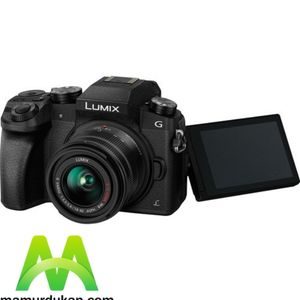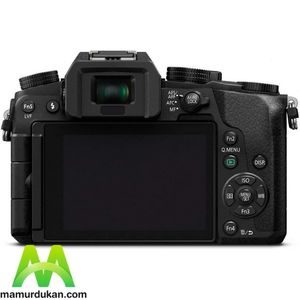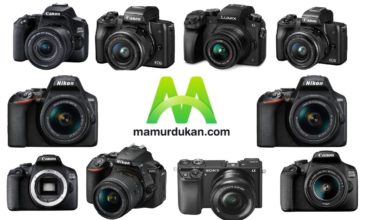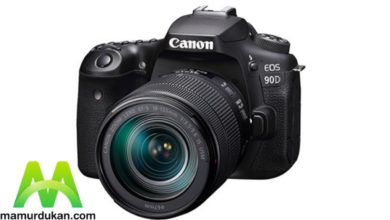| Price | 59000 BDT |
Panasonic Lumix G7 Specs:
Image Sensor
| Type | Live MOS Sensor |
| Pixels | Effective: 16.00 Megapixels |
| Aspect Ratio | 1:1, 3:2, 4:3, 16:9 |
Other Features
| Features | One-Shot AF, Shutter AF, Half Press Release, Quick AF, Continuous AF (during motion picture recording), Eye Sensor AF, AF+MF, MF Assist, Touch MF Assist, Focus Peaking, Touch AF/AE Function, Touch Pad AF, Touch Shutter |
Focusing
| Af Point | Type: Contrast AF system Focus mode: AFS (Single) / AFF (Flexible) / AFC (Continuous) / MF AF detective range: EV -4 – 18 (ISO100 equivalent) |
| Modes | Face/ Eye Detection/ Tracking/ 49-Area/ Custom Multi/ 1-Area/ Pinpoint (Full area touch is available) |
Exposure Control
| Metering Modes | Program AE, Aperture Priority AE, Shutter Priority AE, Manual |
| ISO Sensitivity | Auto/ Intelligent ISO/ 100 (Extended)/ 200/ 400/ 800/ 1600/ 3200/ 6400/ 12800/ 25600 Exposure compensation: 1/3 EV step ±5EV (±3EV for motion picture) |
Shutter
| Shutter Speed | Still image: Bulb (Max. 2 minutes), 1/4000 – 60Shutter speed Motion picture: 1/16000 – 1/30 Electronic shutter: 1/16,000 – 1 |
Shooting
| Color Space | sRGB, AdobeRGB |
| Continuous Shooting | [Mechanical shutter] AFS: H: 9 frames/sec, M: 6 frames/sec (with Live View), L: 2 frames/sec (with Live View)[Mechanical shutter] AFC: H: 6 frames/sec, M: 6 frames/sec (with Live View), L: 2 frames/sec (with Live View) [Electronic shutter] SH: 40 frames/sec[Electronic shutter] AFS: H: 10 frames/sec, M: 6 frames/sec (with Live View), L: 2 frames/sec (with Live View) [Electronic shutter] AFC: H: 6 frames/sec, M: 6 frames/sec (with Live View), L: 2 frames/sec (with Live View) |
File Type
| Image Type | Still image: JPEG (DCF, Exif 2.3), RAW, MPO (When attaching 3D lens in Micro Four Thirds system standard) |
| Image Size | Still Image- [4:3] 4592×3448(L) / 3232×2424(M) / 2272×1704(S) / 1824×1368 (When attaching 3D lens in Micro Four Third system standard) [3:2] 4592×3064(L) / 3232×2160(M) / 2272×1520(S) / 1824×1216 (When attaching 3D lens in Micro Four Third system standard) [16:9] 4592×2584(L) / 3840×2160(M) / 1920×1080(S) / 1824×1024 (When attaching 3D lens in Micro Four Third system standard) [1:1] 3424×3424(L) / 2416×2416(M) / 1712×1712(S) / 1712×1712 (When attaching 3D lens in Micro Four Third system standard) |
| Movie Type | AVCHD (Audio format: Dolby Digital 2ch), MP4 (Audio format: AAC 2ch) |
| Movie Size | MP4: NTSC area[4K] 3840×2160:4K/30p 100Mbps, 4K/24p 100Mbps [Full HD] 1920×1080:FHD/60p 28Mbps, FHD/30p: 20Mbps [HD] 1280×720:HD/30p 10Mbps[VGA] 640×480:VGA/30p 4Mbps AVCHD: NTSC area [Full HD] 1920×1080:FHD/60p 28Mbps, 60p recording [Full HD] 1920×1080:FHD/60i 17Mbps, 60i recording [Full HD] 1920×1080:FHD/30p 24Mbps, 60i recording (sensor output is 30fps) [Full HD] 1920×1080:FHD/24p 24Mbps |
LCD Monitor
| Type | TFT LCD monitor with static touch control Monitor size: Free-angle 3.0-inch (7.5cm) / 3:2 aspect / Wide viewing angle Pixels: Approx. 1040k dots Filed of view: Approx. 100% Monitor adjustment: Brightness, Contrast, Saturation, Red-Green, Blue-Yellow |
Storage
| Storage Type | SD/SDHC/SDXC |
| Built-in Flash | Flash type: TTL Built-in-Flash, GN9.3 equivalent (ISO200.m) / GN6.6 equivalent (ISO100.m), Built-in Pop-up (Reference) Flash Mode: Auto*, Auto/Red-eye Reduction*, Forced On, Forced On/Red-eye Reduction, Slow Sync., Slow Sync./Red-eye Reduction, Forced Off * For iA, iA+ only. Synchronization speed: Less than 1/160 second Flash output adjustment: 1/3EV step ±3EV Flash synchronization: 1st Curtain Sync., 2nd Curtain Sync. |
| Red-Eye Reduction | Yes |
Power Source
| Batteries | DMW-RSL1 |
Physical Specification
| Dimensions (W x H x D) | 124.9 x 86.2 x 77.4 mm / 4.92 x 3.39 x 3.05 inch (excluding protrusions) |
| Weight (Body Only) | Approx. 410g / 0.90 lb (SD card, Battery, Body) |
Lens
| Lens Mount | Micro Four Thirds |
| Focal Length | 14mm to 42mm (35mm camera equivalent 28mm to 84mm) |
| Maximum Aperture | F3.5(Wide) – F5.6(Tele) |
| Description | Aperture Type: 7 diaphragm blades / Circular aperture diaphragm Closest Focusing Distance: 0.3m / 1ft |
Manufacturer Warranty
| Warranty | 03 Years Service Warranty |
Panasonic Lumix G7 price in Bangladesh
Panasonic Lumix G7 price in Bangladesh is BDT 59,000 Taka. Panasonic Lumix G7 could be a mirrorless system device with a high-resolution electronic optical device and therefore the look of AN SLR camera—only with a lower weight, smaller dimensions, a silent shutter, 4K video, and smaller and lighter lenses. The 4K video options—photography and video—of the Panasonic G7 area unit are distinctive. Anyone United Nations agency is charmed by the image quality and user-friendliness of the Panasonic GH4, however doesn’t need to pay cardinal euros on a camera body ought to take into account a Panasonic G7. Or somebody United Nations agency bought a Panasonic G6 in 2013 and has developed a style for photographing with a mirrorless system camera. although you are doing not have a 4K monitor, their area unit still has several choices to profit from with 4K.

Body
Screen & Viewfinder of Panasonic Lumix G7
The resolution of the inherent OLED-EVF (the same because the EVF of Panasonic’s high model, the GH4) is raised with relevancy the Panasonic G6 to a pair of.36 million subpixels. The electronic viewfinder, therefore, incorporates a great higher resolution than its precursor and has additionally gotten a better “eye point” (21 metric linear unit rather than seventeen.5mm), so as a user of glasses you’ll be able to a lot of simply see the complete viewfinder image. With a refresh rate of a hundred and twenty Hertz, the image is additionally nicely quiet. Electronic viewfinders are becoming nicer and higher, associate degreed it might not amaze American state if at intervals many years all cameras were fitted with an electronic viewfinder. The image that you simply see through the viewfinder is simply as massive because of the image that you simply see through a viewfinder of an expert SLR camera and bigger than that of most amateur SLR cameras. associate degree electronic viewfinder offers a lot of functions associate degreed within the dark provides {a better|a far better|a much better|a higher|a stronger|a lot of robust|an improved} image (but more noise) than an optical viewfinder. wherever you much cannot see something a lot of within the dark with associate degree optical viewfinder, with associate degree electronic viewfinder you’ll be able to still review your composition and focus. The tilting LCD screen has, similar to that of the Panasonic G6, over 1.04 million subpixels. With the data button on the rear of the camera body, you identify what proportion of data you get in the frame and whether or not you wish to visualize the electronic level.

High Resolution & Image Quality of Panasonic Lumix G7
The Panasonic LUMIX G7 combinedly offers an outsized range of automatic and quick car Focus (AF) functionalities with that you get precise and clear pictures, although there’s very little time to arrange for the shot. With the advanced distinction AF-system, the camera is exceptionally correct once shots are created with bright lenses even compared to top-class DSLR cameras. With the Low light-weight AF mode, you’ll focus a lot of accurately on the topic with very little environmental light-weight while not associate AF facilitate lamp having to be used. additionally, to the regular Face Recognition AF, the LUMIX G7 conjointly has Face/Eye Detection AF, that focuses mechanically on the eyes of the topic. A lot of pixels there are on a device, the earlier you lose focus as a result of the optical phenomenon after you opt for a smaller aperture. That applies to each complete and sort of camera. it’s a development of physics. what’s elegant regarding the Panasonic G7 is that, within the main menu, you’ve got the choice of selecting optical phenomenon Compensation. The camera then applies additional sharpening if you decide on a tiny low aperture. Mount Olympus conjointly offers this selection in some cameras. it’s a delicate distinction.

Dynamic Range of Panasonic Lumix G7
Micro-43 cameras (Panasonic additionally produces sensors for Olympus) have a remarkably high dynamic vary. If you merely look into the device size, then you’d expect that associate APS-C camera {to do|to try to |to try associated do} roughly one stop poorer than a full-frame camera and a micro-43 camera to try and do one-stop poorer than an SPS-C camera. The Panasonic G7, rather like the GX7 and GH4, will be perceptibly higher. For making jpg shots and victimization the 4K ikon mode (8 bits rather than twelve bits RAW), it’s well worth the effort to experiment a touch with the various camera settings so as to retain the maximum amount dynamic vary as doable. The white of the breast of the good crested podicipitiform seabird within the shot below (shot within the 4K ikon mode) shows no detain any longer. In distinction with RAW shots, there’s no exposure house here so as to save lots of the highlights subsequently. it’d are higher to underexpose the shot a lot of (the bar chart shows that there’s space for that) than to create it lighter subsequently. With the advanced perform Intelligent D-range management, you furthermore may have a lot of management over the top result, if you’ve got set that before.
Noice of Panasonic Lumix G7
Camera manufacturers are constantly busy with perfecting the signal-to-noise rate, whereby they’re getting decreasingly more in retaining details while suppressing noise. Differences are small and are substantially visible at the high ISO values. Because our scores correspond to a weighted normal of low and high ISO noise measures, the Panasonic G7 earned the same scores as us as, for illustration, the Panasonic GX7 (a camera that according to Panasonic has the same detector). That isn’t to say that there has not been any progress made; it’s a subtle difference that’s achieved in particular at the advanced ISO values. The illustration below of the bettered noise repression of the Panasonic G7 in comparison with the Panasonic G6 comes from Panasonic. What was indeed more conspicuous to me than the lowering of the noise was the advanced detailing in the hedge in the reverse on the right.

Video Quality of Panasonic Lumix G7
The Panasonic Lumix G7 shines with 4K- videotape images in 3840 × 2160 at 25p (without interpolation) or 24p in MP4. It goes without saying that you can also make vids in Full HD 1920 x 1080 at 50p in AVCHD or MP4 (MPEG-4/H. 264) while retaining Full- time AF. There’s a world of difference between a 2-megapixel print and an 8-megapixel print. The same applies to videotape 4K is much further beautiful than Full HD. Indeed if you don’t yet have a 4K screen, 4K videotape formerly offers advantages. First of all, you take filmland in the videotape quality of the future; in a couple of times, we will suppose Full HD recordings are out of date, and you’ll be happy that you started beforehand with 4K. It means that you’ll have further enjoyment latterly from the shots you’re taking now. You can cut out images from a 4K videotape to Full HD, without a loss of quality. I lately saw a demonstration of how you make individual Full HD images of the canvasser and the pollee in the editing of an interview that was made with one 4K videotape camera. Add an overview (the 4K original down- tried to Full HD), and it looks like you made a videotape recording with 3 Full HD cameras. Thanks to the high resolution of 4K, you can also pull a subject nearby cutting down the 4K recording to Full HD. The sharpness and signal-to-noise rate of a 4K videotape that you reduce to Full HD is visibly better than one from a Full HD camera that’s made directly in the camera. The Samsung NX500/ NX1 and Nikon 1 J5 also offer a 4K videotape, but the Nikon flicks in 4K outside of 15 bps. The 360- degree outlook function is new. There’s also WiFi on it. The shortest shutter time is 1/ 16000, which isn’t only handy for action photography. The extremely short shutter times videlicet also makes it possible to play with the focal depth, indeed if there’s formerly a lot of light.
Panasonic Lumix G7 Autofocus
With an SLR, the number of AF points — and rather the number of cross-AF points — is reported. The more, the better. Druggies of an SLR camera have gotten used to only being suitable to concentrate in the center of the image. That’s essential to the system of traditional phase- discovery AF. With a mirrorless system camera, it works else the Panasonic G7 has 49 AF fields that are distributed over virtually the entire image and of which you can acclimate the size. By using a small AF field, you can veritably directly aim at the point that you want to have sharp. This is ideal for those who want to play with focal depth using a blowup lens or bright lens when a subject has a lot of details, where a larger AF detector could make a mistake. For making a videotape, you don’t want the camera to start fastening during a shot, or when you touch the release button. Videographers thus generally turn the AF off. But you’ll occasionally miss the delicacy and the speed of AF. For videotape makers, the One-Shot AF is a result. You use the camera during videotape with homemade fastening but can call in help from the AF at any given moment. This option has been on Panasonic cameras for a while, but you have to know how to find it. In the fourth picture on the right, you see the menu setting where you can choose One-Shot AF. After that, you can use the AF/ AE button to the right, coming to the viewfinder, during videotape recordings, to concentrate with help from the AF, while the camera is on homemade focus.
Pros & Cons of Panasonic Lumix G7
Pros
- 4K video.
- Built-in EVF.
- Vari-angle touch LCD.
- Dual control dials.
- Speedy performance.
- 4K Photo and Post Focus modes.
- Built-in flash.
Cons
- Tracking focus slows burst rate.
- Not available as a body only.
- Plastic build.
If you are interested to watch some latest laptops which are available on the market, please check this out. Latest laptops in Bangladesh Also if you want to see the latest smartphones, please check these out!!! Smartphones Our information may not be 100% accurate. To clarify, you can visit their official site Panasonic
59,000 Taka
Pros
4K video. Built-in EVF. Vari-angle touch LCD. Dual control dials. Speedy performance. 4K Photo and Post Focus modes. Built-in flash.
Cons
Tracking focus slows burst rate. Not available as a body only. Plastic build.
3 Years


